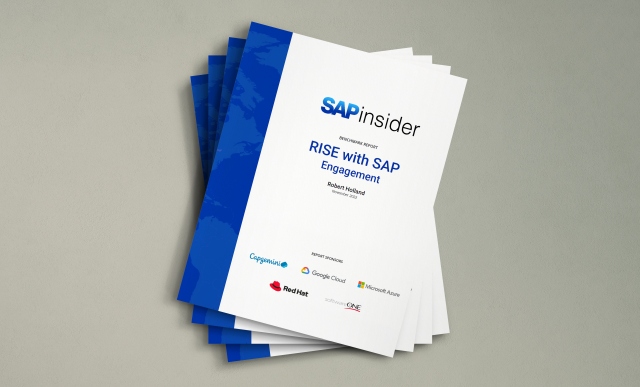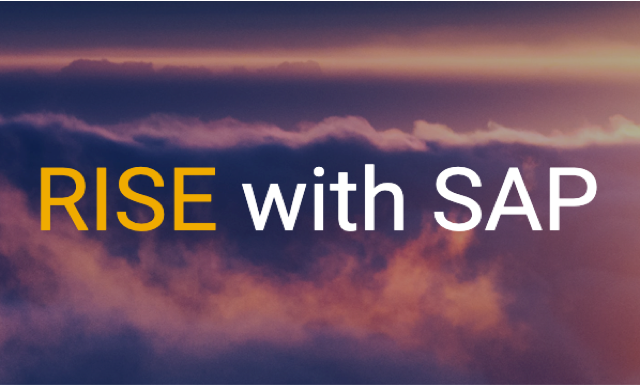Rise into the Future: Key Takeaways from SAP’s Latest Webinar
Meet the Authors
Key Takeaways
⇨ Strategic migration to SAP’s S/4HANA cloud is driven by practical needs for efficiency and expansion.
⇨ The RISE with SAP program underscores the importance of a clean core strategy and future-readiness.
⇨ Successful digital transformation requires planning, value focus, and the right expertise, as evidenced by collaborative insights from SAP’s community.
Many companies are considering moving their ERP systems to SAP’s S/4HANA cloud. The wish to do so is not guided by the sudden hype of cloud technology, but for strategic and practical reasons. Businesses are witnessing rapid expansion of their data each year and realise that the need to have efficient, fast and reliable systems is vital for long-term success. However, what options are available for users in the services of RISE with SAP? What mindset should business leaders develop when planning to migrate to the cloud – and how can they stay up to date with all the updates and compliance regulations?
These and many other points were discussed at SAP’s “Rise into the Future” webinar. Presenting the recently unveiled RISE with SAP Migration and Modernization Program, SAP executives, partners and customers share insights on their experiences with the cloud and what users can expect from the program.
Among the speakers was Jan Gilg, the President and Chief Product Officer, Cloud ERP, SAP. Gilg explained that migrating to S/4HANA will not only make it possible to achieve important business goals, such as business stability, financial management and utilisation of AI but will also serve as a “green ledger” to bring businesses forward in their sustainability goals.
“SAP S/4HANA has become the heart of the sustainable enterprise”, Gilg said.
One of the features in the updated RISE with SAP Methodology that businesses can look forward to is the ERP clean core strategy. Navneet Mishra, Global Vice President, Strategy and Portfolio at SAP, presented it. The clean core is designed to establish the stability of the standardisation of the processes and data that are underlying ERP operations. It assists in faster software deployment, preparing organisations to maximise strategic benefits and overall total cost of ownership.
“Clean Core is a mindset and philosophy, supported with governance and guidelines that lay the foundation for a flexible and future-ready gear. It describes modern approaches to the design of business processes”, Mishra stated.
Another highlight was the insight that Rob Cain from McKinsey & Company gave to business leaders. Cain argued that the role of ERP in the modern world is not diminished. On the opposite, it is only expanding as it continues to be the process anchor for companies. Without ERP, it would be impossible to optimise Generation AI, innovation and greater productivity in general. Therefore, to experience a successful cloud ERP transformation, Cain recommended the following:
- The transformation should be rooted in the cloud because that is how the full potential of ERP is realized and accelerated.
- Maintain the focus on value, rather than cost or schedule, because it is crucial to have a programmatic set of outcomes that are rooted in values.
- Not bringing the right experts during migration can hinder and delay the implementation process.
Geoff Scott, the CEO of ASUG, also provided valuable points for SAP users. Specifically, Scott argued that the enhanced RISE with SAP will help companies maintain quality consistency throughout the process, as well as guide customers to a list of validated partners who are trained in the right methodology. Enhancements like this are especially helpful in the long-run as they show that SAP is listening to the feedback of user-groups and recognises the loyalty of its customers.
The primary advice that Scott gave to SAP users was to assess the following questions: “What is your business case? Do you understand the risks? Have you done all the work you need to do on data migration? Are we doing enough to test whether this new state delivers the business value that we hope it does?” Answering these will help SAP customers determine what next steps they should take in their digital transformation journey.
Another panel speaker, Yves Gautier, the IT Director/SAP Excellence team lead at Lexmark, shared his company’s successes since migrating to S/4HANA. With the wish to optimise the total customer ownership and to achieve stability and security, Lexmark now experiences “an up-to-date environment harmonizing all operating systems with consistent database releases and bringing up-to-date support packs.”
“We have not experienced any outage since migrating – this stability is a major positive outcome of this transformation”, Gautier shared. “SAP S/4HANA also provides an up-to-date security environment, for example, all databases are encrypted which was not the case before.”
For those considering moving to cloud technology, it is highly recommended to familiarise yourself with resources available on the SAP website and handbooks. Once that step is completed, organisations should assess the readiness of their business for migration. Deploying resources provided by SAP like clean core and recruiting the right expertise to help companies secure the best possible experience during the RISE with SAP.
The webinar can be watched on-demand here.









